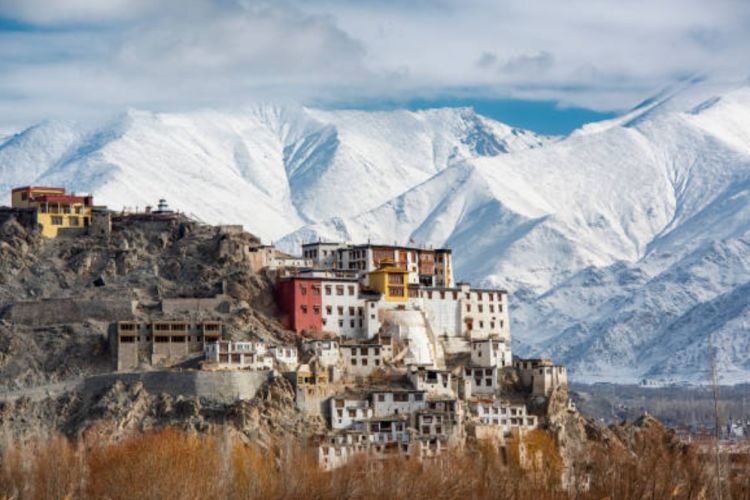Ladakh statehood: When the youth of Ladakh took to the streets on September 24, their message went far beyond protest slogans. The region has lived with years of unease since it was carved out as a Union territory in August 2019. The promise of self-rule and identity protection, once seen as a reward for decades of neglect, has turned into disillusionment.
Today, the movement has crystallised around two central demands — full statehood and inclusion under the Sixth Schedule of the Indian Constitution. Behind these slogans lies a deeper struggle for political autonomy, tribal rights, and local governance.
READ | How corporate social responsibility lost its purpose
The demand for Ladakh statehood
The protests are led by two powerful civil society groups — the Leh Apex Body (LAB) representing Buddhist-majority Leh, and the Kargil Democratic Alliance (KDA) representing Muslim-majority Kargil. Despite their differences, they are united on a four-point agenda that seeks constitutional safeguards and greater control over land, jobs, and resources.
When the Centre revoked Article 370 and bifurcated Jammu & Kashmir into two Union Territories, Ladakhis initially welcomed the change. They hoped it would end Kashmir-centric politics and allow direct access to New Delhi. But optimism soon gave way to frustration.
Ladakh did not receive an elected assembly; key decisions were left to bureaucrats and the Lieutenant Governor. Without constitutional protection for land and employment, locals felt exposed to external interests — issues that were once safeguarded under Articles 370 and 35A. The result is a growing sense of democratic deficit and political alienation.
Economic viability: The missing piece
Economic viability is the missing piece in Ladakh’s political puzzle. While autonomy dominates the debate, the region’s dependence on government employment and tourism leaves it economically fragile. The absence of private industry or sustainable investment limits job creation, especially for educated youth who form the spine of the current protests.
Without fiscal autonomy and access to capital, statehood risks being symbolic. For a self-governing Ladakh to succeed, it must be able to generate its own revenues, attract responsible investment, and retain talent that now migrates to other states. Autonomy without economic empowerment will only deepen the sense of isolation.
Why the Sixth Schedule matters to Ladakh
The Sixth Schedule, which grants autonomous administrative powers to tribal-majority areas in the Northeast, is now central to Ladakh’s movement. It allows the creation of Autonomous District Councils (ADCs) empowered to legislate on land, forest, and cultural rights.
For Ladakh, where over 90% of the population belongs to Scheduled Tribes, this framework offers more than symbolic recognition. It is seen as a constitutional guarantee to protect fragile ecosystems, local livelihoods, and community ownership of land. The region’s unique high-altitude ecology and tribal traditions demand a governance model suited to its terrain — one that balances development with sustainability.
An agreement reached in May 2025 promised reforms like 95% local job reservation, 33% women’s quota in Hill Development Councils, and recognition of local languages such as Bhoti, Purgi, Balti, and Shina. Yet, without Sixth Schedule protection, many fear these measures could be diluted over time.
Climate change and ecological fragility
The ecological case for self-governance is as strong as the political one. Ladakh’s glaciers are retreating, its rivers shrinking, and its fragile ecosystem under mounting stress from unplanned tourism and defence infrastructure. Decisions taken far from the Himalayas often ignore the local realities of water scarcity, grazing patterns, or traditional architecture suited to high altitudes.
Embedding environmental protection within local governance could make the Sixth Schedule a climate adaptation tool as much as a political instrument. The region’s survival depends not only on autonomy, but on the authority to manage its own environment.
Governance and security in a strategic borderland
Ladakh’s political future cannot be viewed in isolation from national security. Bordering China, it occupies one of India’s most sensitive frontiers. Since the 2019 reorganisation, the region’s strategic importance has grown, with increased military presence and infrastructure projects.
For the government, ceding greater local control is a difficult choice. From a security perspective, maintaining administrative authority seems justified. Yet, without political participation, resentment risks deepening. The challenge for New Delhi is to strike a balance — safeguarding sovereignty while granting meaningful autonomy.
Representation and inclusion: Who speaks for Ladakh?
A broader question is who speaks for Ladakh. The movement has been largely driven by urban voices from Leh and Kargil, but the concerns of remote villages, women, and pastoral communities rarely find space. The May 2025 agreement’s provision for 33% representation for women in the Hill Councils is a welcome step, but implementation will determine its real worth.
For autonomy to have legitimacy, it must rest on inclusive institutions that reflect Ladakh’s social diversity. Otherwise, the quest for self-rule could reproduce the same exclusions that people are protesting against.
Real autonomy, not symbolism
The real danger for Ladakh is that statehood or Sixth Schedule inclusion could be reduced to symbolic gestures. India has seen several cases where constitutional changes lacked genuine devolution of power. If that pattern repeats, it will only heighten alienation.
Ladakh’s movement shows that autonomy, ecology, and identity are inseparable in fragile Himalayan zones. Protecting tribal land and empowering local institutions is not a concession — it is essential governance.
For New Delhi, the task is not merely to pacify protesters but to reimagine federalism in frontier regions. A roadmap that embeds autonomy with accountability — rather than bureaucratic tokenism — can turn Ladakh’s demand into a model of participatory democracy.

